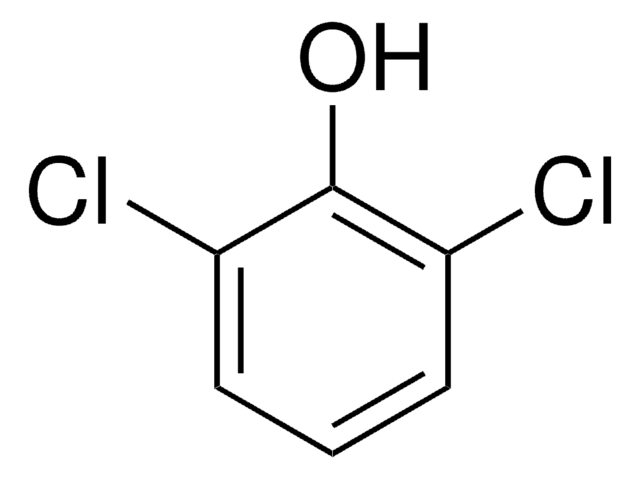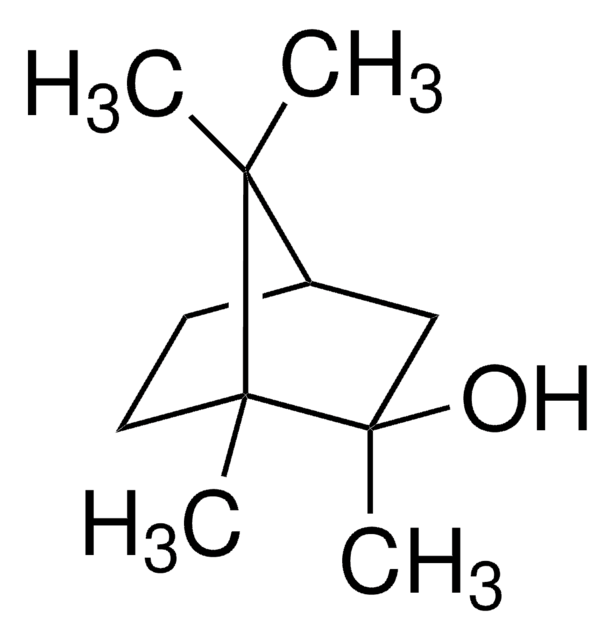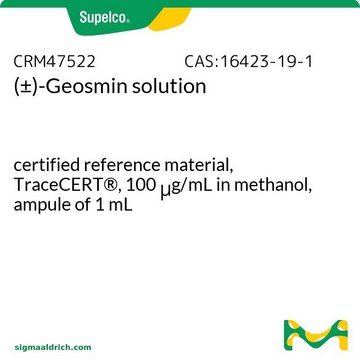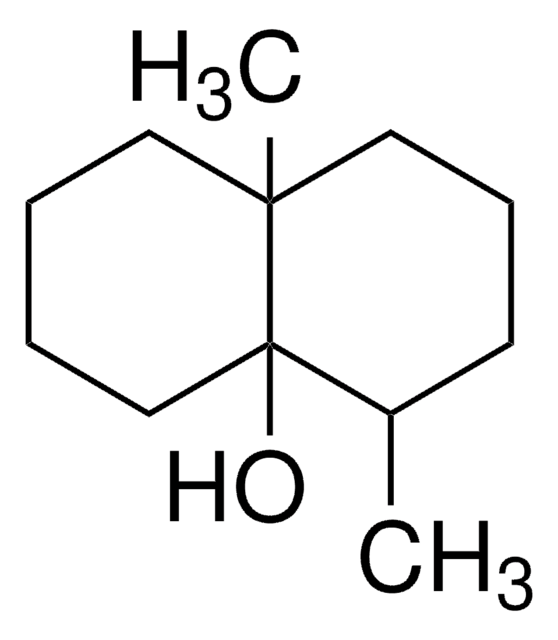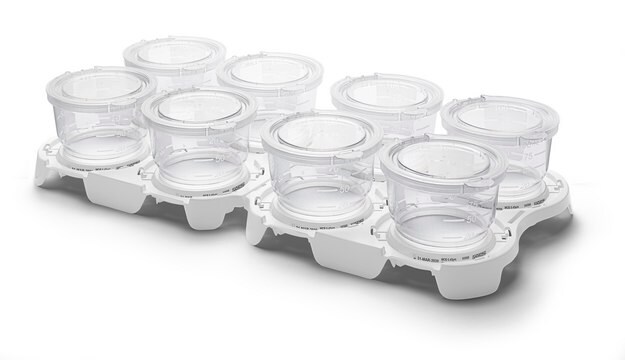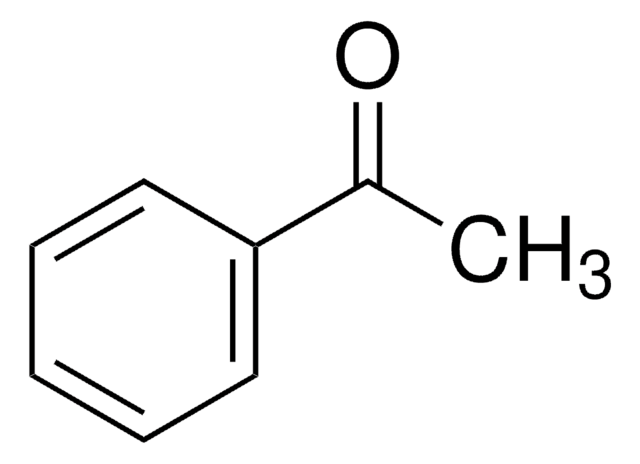31102
2,6-Dichlorophenol
PESTANAL®, analytical standard
About This Item
Productos recomendados
grade
analytical standard
product line
PESTANAL®
shelf life
limited shelf life, expiry date on the label
technique(s)
HPLC: suitable
gas chromatography (GC): suitable
bp
218-220 °C (lit.)
mp
64-66 °C (lit.)
application(s)
agriculture
environmental
format
neat
SMILES string
Oc1c(Cl)cccc1Cl
InChI
1S/C6H4Cl2O/c7-4-2-1-3-5(8)6(4)9/h1-3,9H
InChI key
HOLHYSJJBXSLMV-UHFFFAOYSA-N
¿Está buscando productos similares? Visita Guía de comparación de productos
Categorías relacionadas
General description
Application
- To study the kinetics, performance, and mechanism of the oxidative degradation of 2,6-dichlorophenol (2,6-DCP) by ferrate (VI) (Fe(VI))
- Removal of 2,6-dichlorophenol in water by copper oxide (CuO) activated peroxymonosulfate as catalyst
- Removal of 2,6-dichlorophenol by adsorption with activated polypropylene nanofiber
- Degradation of 2,6-dichlorophenol by Fe-doped titanium oxide(TiO2) sonophotocatalytic process
- Determination of 2,6-dichlorophenol by surface-enhanced Raman scattering (SERS) with molecular imprinting
Legal Information
signalword
Danger
hcodes
Hazard Classifications
Skin Corr. 1B
Storage Class
6.1C - Combustible acute toxic Cat.3 / toxic compounds or compounds which causing chronic effects
wgk_germany
WGK 2
flash_point_f
Not applicable
flash_point_c
Not applicable
ppe
Eyeshields, Faceshields, Gloves, type P3 (EN 143) respirator cartridges
Elija entre una de las versiones más recientes:
Certificados de análisis (COA)
¿No ve la versión correcta?
Si necesita una versión concreta, puede buscar un certificado específico por el número de lote.
¿Ya tiene este producto?
Encuentre la documentación para los productos que ha comprado recientemente en la Biblioteca de documentos.
Nuestro equipo de científicos tiene experiencia en todas las áreas de investigación: Ciencias de la vida, Ciencia de los materiales, Síntesis química, Cromatografía, Analítica y muchas otras.
Póngase en contacto con el Servicio técnico